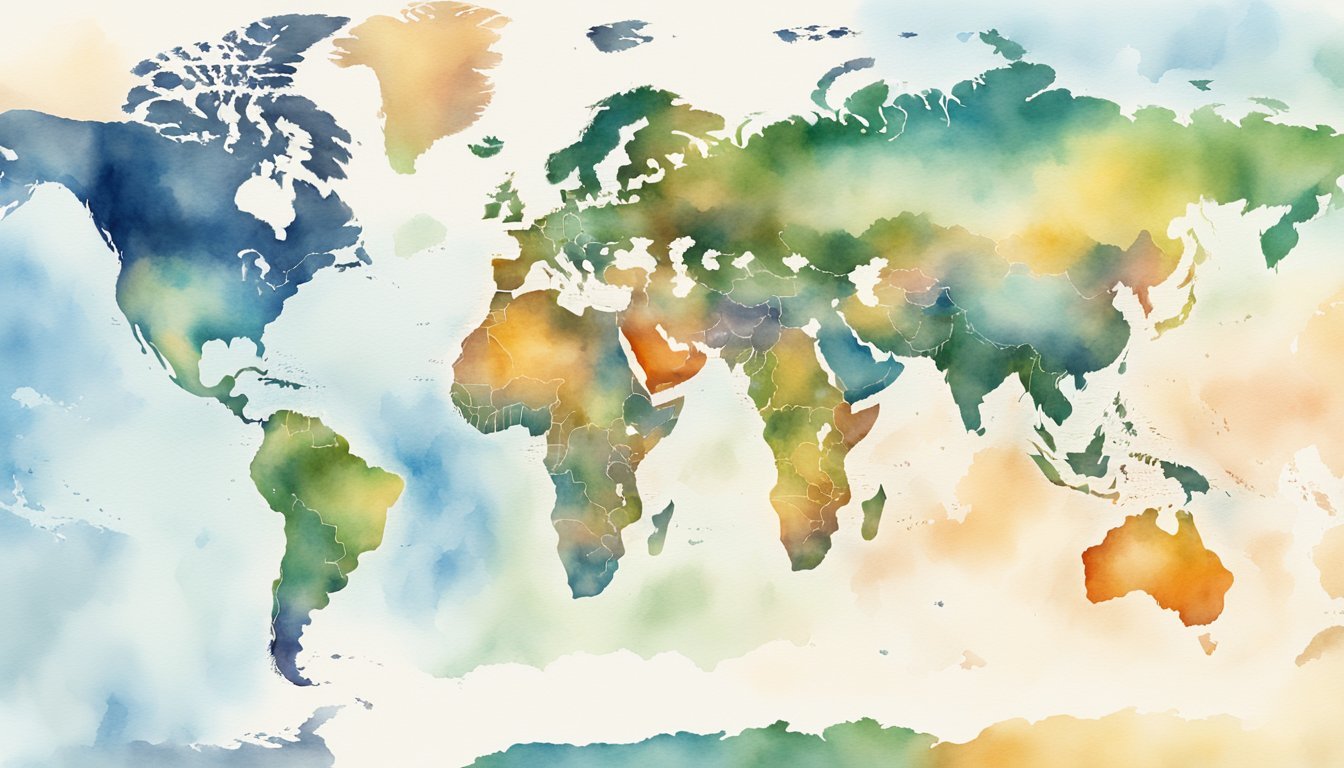Understanding Global Nation Count
Criteria for Statehood
The number of countries in the world depends on the criteria used to define a nation-state. Typically, a country is considered a sovereign state when it has a defined territory, a permanent population, a government, and the capacity to enter into relations with other sovereign states. However, there are varying definitions and opinions on what constitutes a nation-state, which can lead to different counts of countries in the world.
Recognized vs Unrecognized Countries
In determining the global nation count, it is crucial to consider the difference between recognized and unrecognized countries. 195 countries are generally recognized, including 193 member states of the United Nations and two observer states, the Holy See and the State of Palestine. Nonetheless, a few countries remain unrecognized or partially recognized, though they may meet the criteria of statehood. For instance, Taiwan and Kosovo are not universally recognized as independent nations, despite fulfilling the requirements of statehood.
The Role of the United Nations
The United Nations (UN) plays a vital role in determining the global nation count. With 193 member states, the UN offers an authoritative perspective on country recognition. Countries that are part of the UN are widely recognized as independent and sovereign. Moreover, the two UN-observer states, the Holy See and the State of Palestine, are also counted as separate nations, bringing the total to 195.
While the number of countries might differ based on varying definitions and recognition statuses, it is generally accepted that there are 195 countries in the world today. This count includes the 193 United Nations member states, along with the Holy See and the State of Palestine, both of which are UN-observer states, as well as Taiwan and Kosovo, which are not fully recognized but meet the criteria for statehood.
Geopolitical Dynamics and Population

Largest to Smallest Countries by Area
When considering the size of countries by area, Russia is the largest, with a massive land area of over 17 million square kilometers. Canada is the second-largest, with almost 10 million square kilometers, followed by the United States, which has an area of around 9.8 million square kilometers. China and Australia are next in line, with areas of approximately 9.6 and 7.7 million square kilometers, respectively1. Here is a brief table of the largest countries by area:
| Country | Area (sq. km) |
|---|---|
| Russia | 17,100,000 |
| Canada | 9,984,670 |
| United States | 9,833,517 |
| China | 9,596,961 |
| Australia | 7,692,024 |
Population Distribution
Population distribution varies greatly across the world. China and India are the most populous nations, with populations of approximately 1.4 billion and 1.3 billion, respectively. The United States is the third most populous country with a population of around 330 million. Interestingly, despite their large land areas, Russia and Australia each have populations of approximately 145 million and 26 million, respectively2. Africa as a whole has a population of over 1.3 billion people and is experiencing rapid population growth.
Territories and Regions with Special Status
In addition to the recognized countries, there are several territories and regions around the world with special status. Some of these include Greenland, Puerto Rico, Bermuda, and Western Sahara. Greenland, the world’s largest island3, is an autonomous territory within the Kingdom of Denmark. Puerto Rico is an unincorporated territory of the United States, while Bermuda remains a British Overseas Territory. Western Sahara is a disputed territory, with both the Sahrawi Arab Democratic Republic and Morocco claiming sovereignty4.

